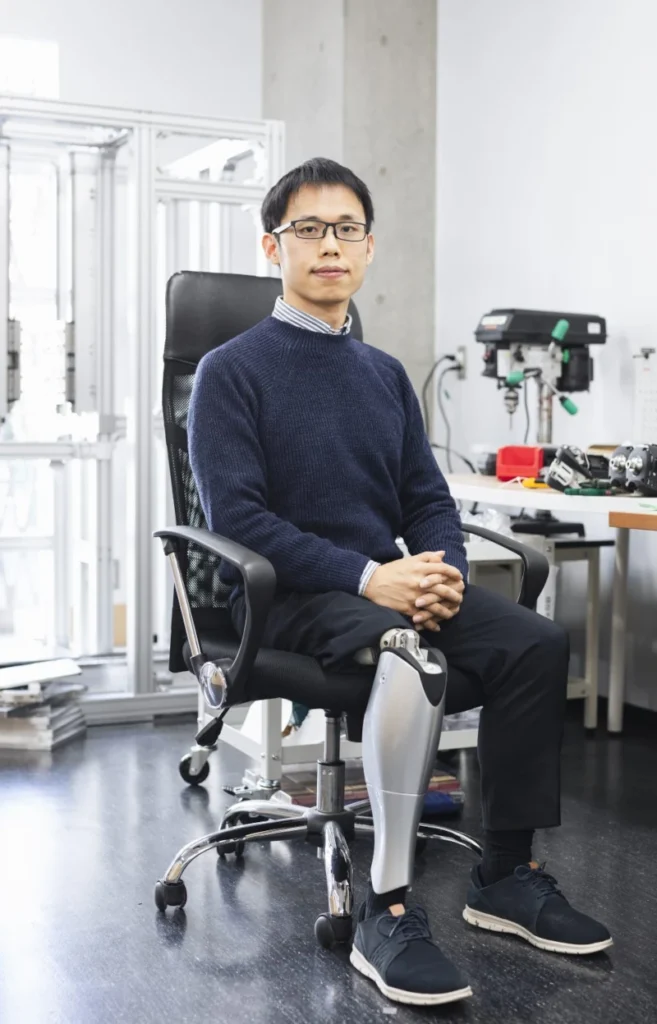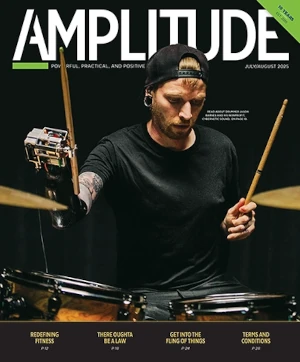
For at least a year (and probably longer), the Utah Bionic Leg has led the race to bring a fully integrated, AI-equipped, power-enhanced prosthesis to the marketplace. But there’s now a worthy challenger: BionicM’s Bio Leg, which received Class II exemption registration last week from the FDA. That regulatory shortcut puts the Bio Leg on track to reach the US market by the end of 2024, a timeline very comparable to the Utah Leg’s. The two devices seem to be running neck and neck.
Like the Utah Leg, the Bio Leg combines microprocessor brains with motorized brawn. It supports a more natural, fluid gait and greater stability than passive MPK devices, while reducing cognitive load and requiring less physical effort during walking and sit-to-stand. The Bio Leg’s weight (six pounds) and battery life (one full day) are roughly equivalent to the Utah Leg’s.
The Tokyo-based BionicM isn’t well recognized within the United States, but it has been chasing the powered-leg payoff for nearly a decade. The company traces its origins to a graduate engineering lab at the University of Tokyo in 2015. BionicM incorporated in 2018, won a bundle of high-profile international design prizes in 2019 and 2020, and has spent most of this decade optimizing its technology and beefing up its financing. They’ll be exhibiting this week at the American Orthotics and Prosthetics Association (AOPA) national conference, introducing themselves to the movers and shakers of America’s limb-care industry.
Here are five things to know about the company and its breakthrough device.
1. The Bio Leg was conceived and designed by an above-knee amputee.
The heart and mind behind the Bio Leg belong to Sun Xiaojun, a native of China who lost his right leg at age nine to osteosarcoma. He spent the next 15 years on crutches, due to the extreme scarcity of prosthetic technology in his province, and didn’t receive his first prosthetic leg until he’d moved to Japan as a graduate student. But instead of gaining the freedom and mobility he’d long dreamed of, Sun struggled with balance, stamina, and pain on his prosthesis. There’s got to be a better way, he thought. So he joined the robotics division of University of Tokyo’s engineering school and began working to develop a lighter, stronger, more fall-resistant prosthesis.
2. BionicM earned a design award previously won by Hulu, Pinterest, and AirBnB in their startup phases.
Sun and his team made a huge splash at the 2017 South by Southwest (SXSW) show, winning an Interactive Innovation Award in the student category. It was the first Japanese entry ever to earn SXSW Interactive honors, and the recognition immediately boosted Sun’s credibility among Japan’s investor class. The device they presented, a prototype dubbed “Suknee,” was too heavy, unstable, and unsightly for actual use. But it was convincing enough as a proof of concept to attract some early financing. The SXSW honor also helped Sun get critical backing from the University of Tokyo’s affiliated venture capital firm, UT Edge Capital Partners (UTEC).
3. The Bio Leg made its commercial debut in Japan and China last year.
BionicM introduced the product via a modified direct-to-consumer model, in which the company partners with third-party socket manufacturers. This arrangement makes the Bio Leg far more affordable than other advanced bionic legs, but it still ain’t cheap. Competing devices in Japan cost more than 10 million yen (or $77,000), and a Bio Leg sells for roughly one-third that amount. The price still falls beyond the budget of most amputees, so BionicM is trying to get the device qualified for government-backed subsidies that would make it accessible to more patients in Asia.
4. The company is tinkering with a data-collection feature to support gait training.
According to the Japanese industry journal Bridge Tokyo, BionicM is looking for ways to have the leg’s onboard AI sensors double as biometric monitoring devices. By recording the parameters of each step (including stride length, speed, force, and orientation), the leg could equip prosthetists and PT/OTs with gobs of data to guide their clinical recommendations. “There are many kinds of amputee,” Sun told the “Disrupting Japan” podcast. “We need to customize the parameters according to each users request.”
5. American beta testers have embraced the Bio Leg more warmly than their Japanese counterparts.
“In the US, they think it’s [already] good enough,” Sun told “Disrupting Japan.” “They like the design, they like the appearance, they like the power-assist function. In the future we need to improve it, but they can accept the product now.” By comparison, he says, Japanese consumers are more demanding and less patient, particularly with respect to the noise generated by Bio Leg’s motors. “We tried to improve the noise, but it takes time to do this improvement,” Sun said. “A startup company cannot make a perfect product at beginning. In the US, people can accept the noise. They think it’s quite cool. They think it works like a robot.”
For more information, visit BionicM’s website at bionicm.com. If you’re at the AOPA show, they company is exhibiting at Booth #224.




